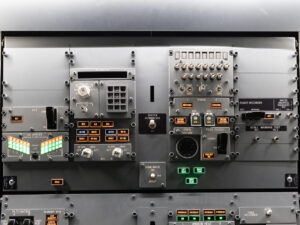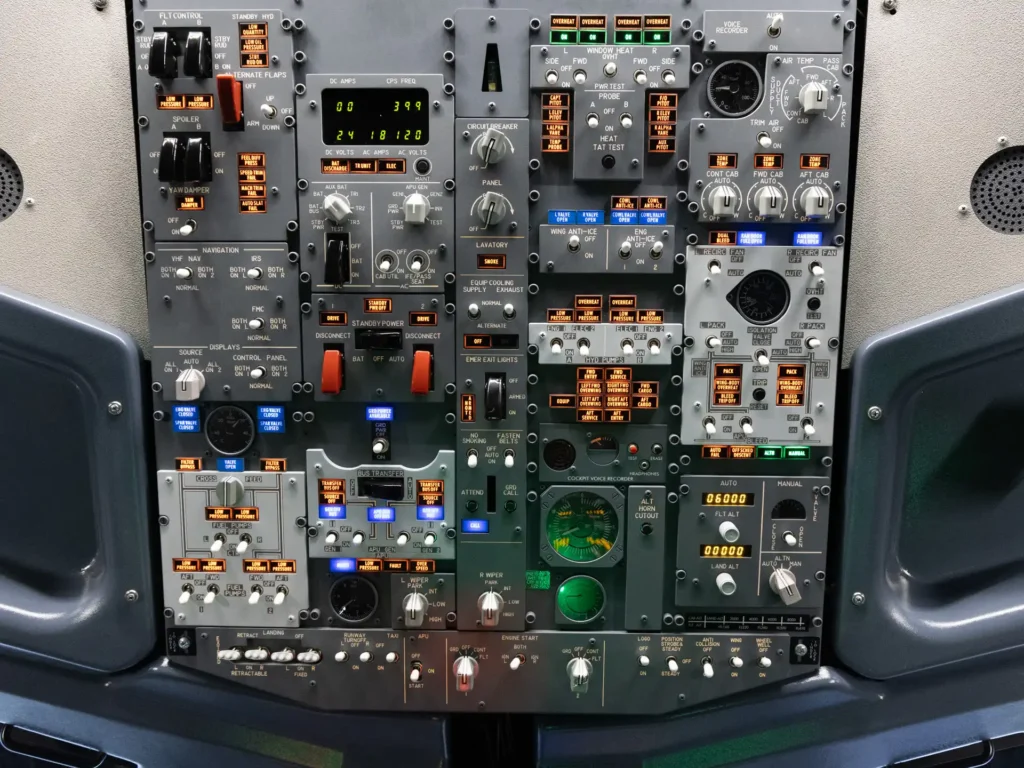The overhead consists of two large panels: the main overhead and an aft overhead.
The main overhead contains panels for various aircraft systems: flight controls, navigation, fuel, electrical, window & probe hear, anti-icing, hydraulics, air conditioning & heating, pneumatics, pressurization, lighting, APU, and engine start switches.
The aft overhead contains panels for various aircraft systems: flap & slat indicators, IRS navigation, EEC engine controls, emergency oxygen, MACH overspeed and stall test switches.
The main overhead panel is a large and heavy item. Installation requires a support frame that is bolted into the roof of the flight deck structure. This allows the aft edge of the overhead panels to be mounted on a hinge so the panels can be swung downward for ease of cable interfacing and maintenance.


This flight simulator uses a Flight Deck Solutions MX series Overhead Panel and PRO-MX series Aft Overhead Panel. Both panels have integrated IBL lighting. The Engine Start Switches incorporate solenoids that will temporarily hold the switch in the GRD position when starting the engine, then automatically release it to the OFF position when the engine N2 compressor speed reaches 56 percent. This realistically models real aircraft operation.
The main difference between Flight Deck Solution’s MX series and the PRO-MX series is the MX version is less expensive. Cost is saved by using LED lights to emulate analog dial indicator needle position. This keeps the flight simulator indicators functional yet avoids the cost and complexity of servos and their associated interfacing and controllers. Additionally, a few indicators which have very limited functionality in simulated flight, such as the fuel temperate gauge, are simply placards that have an appearance of the real aircraft gauge.



